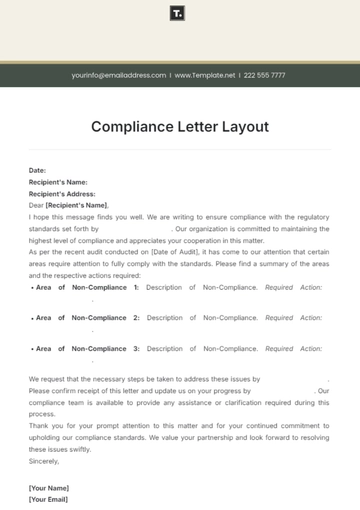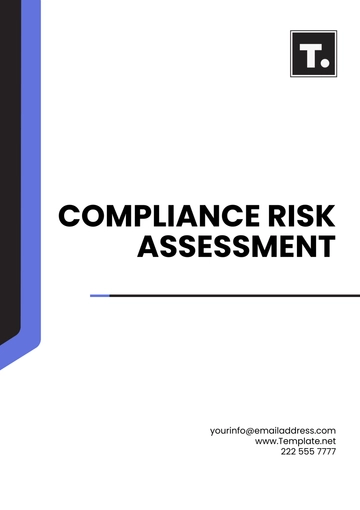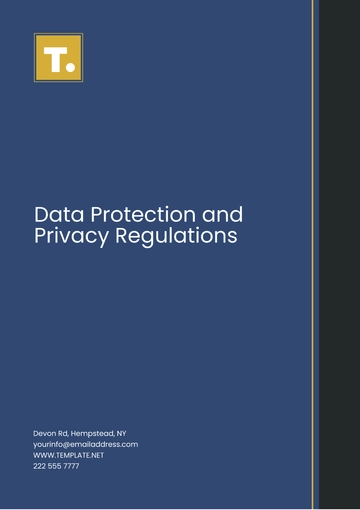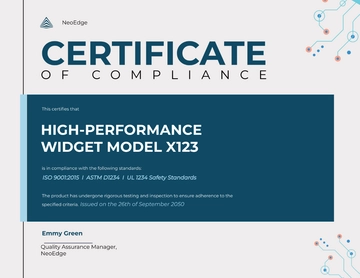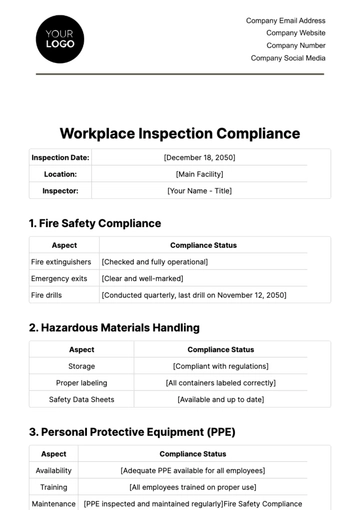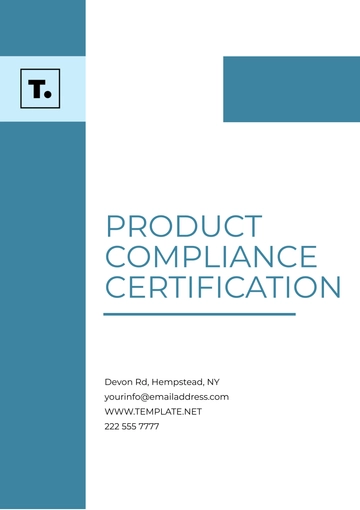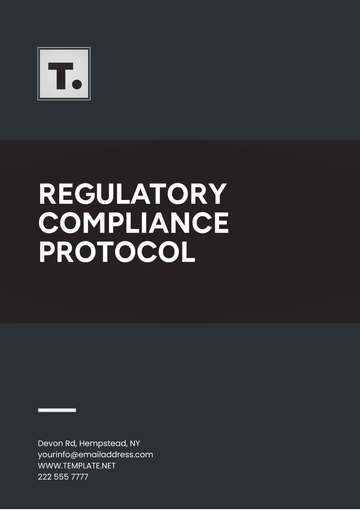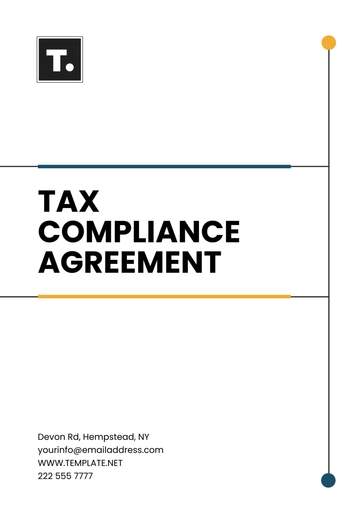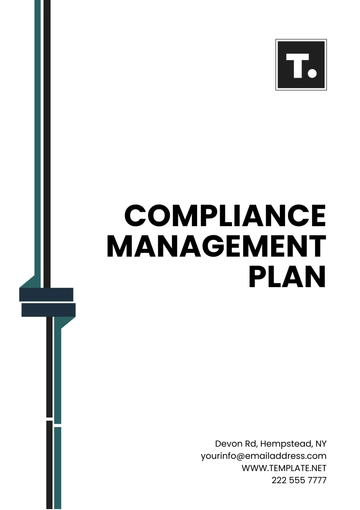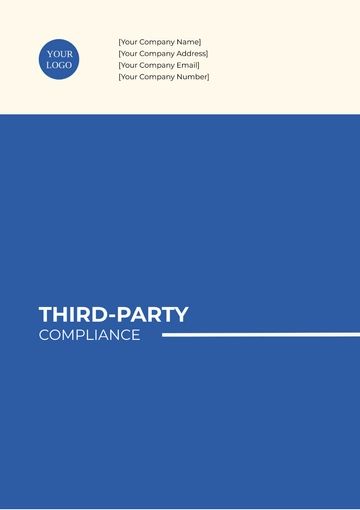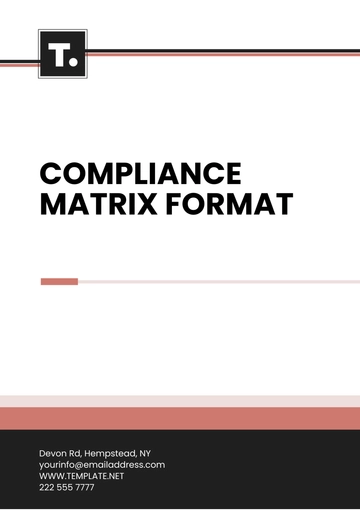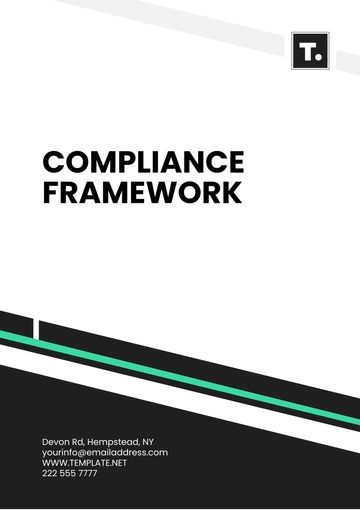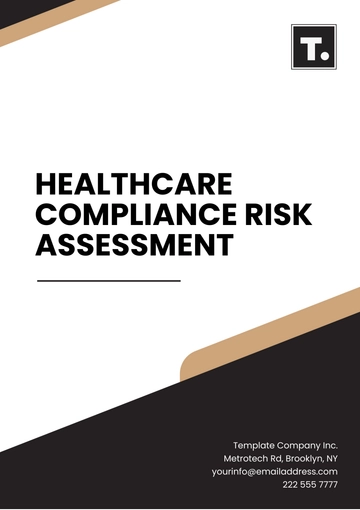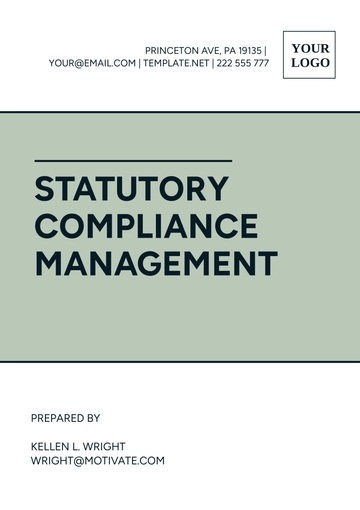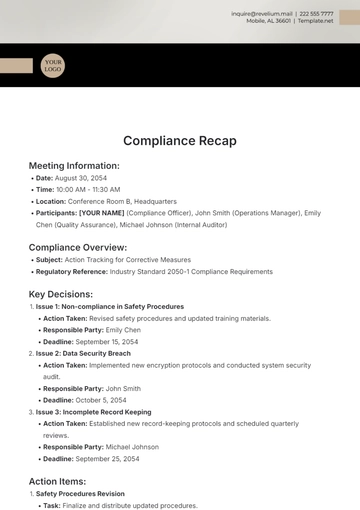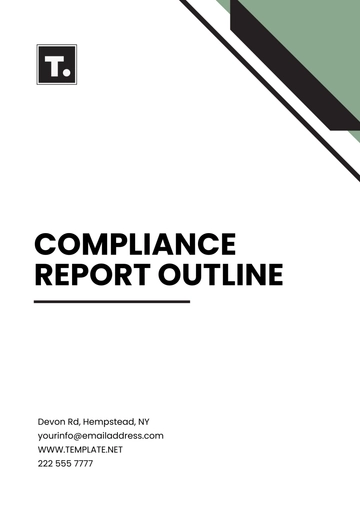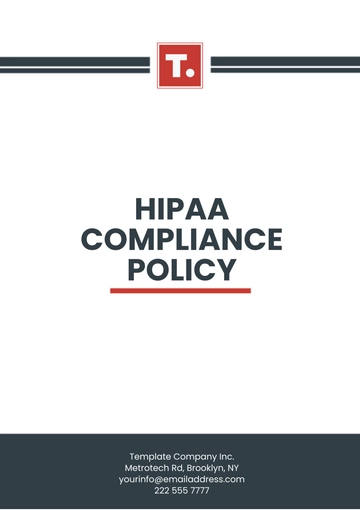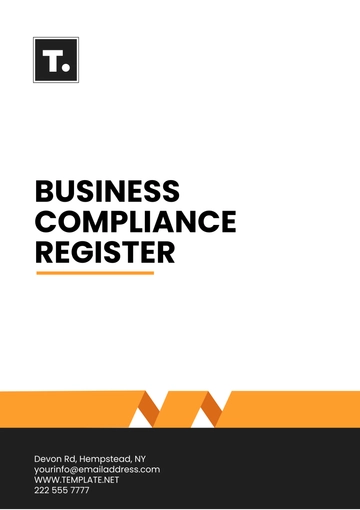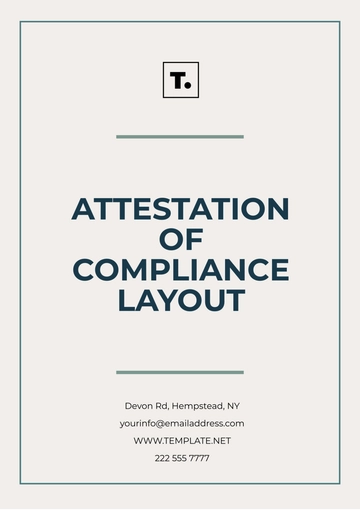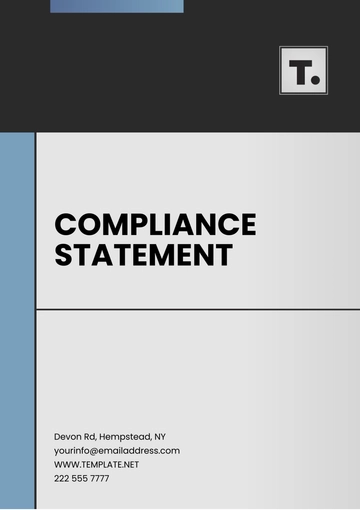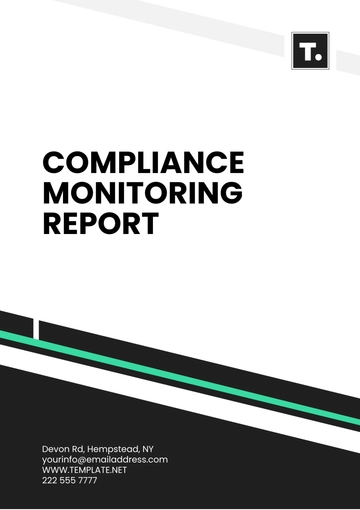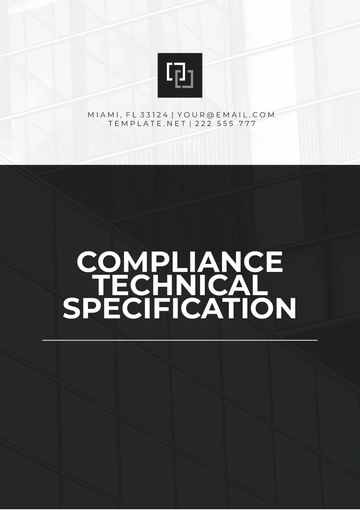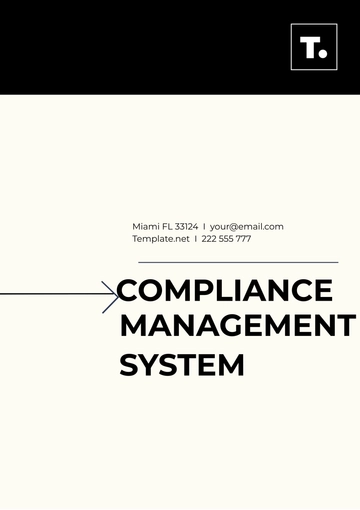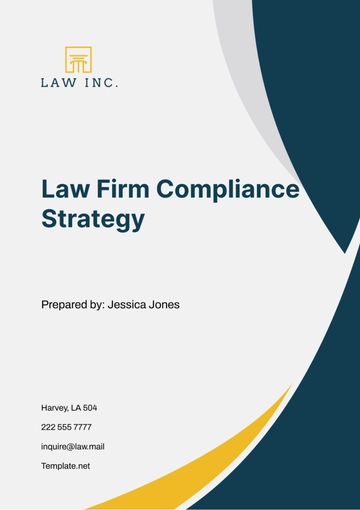Free Internal Controls for Marketing Compliance in Advertising
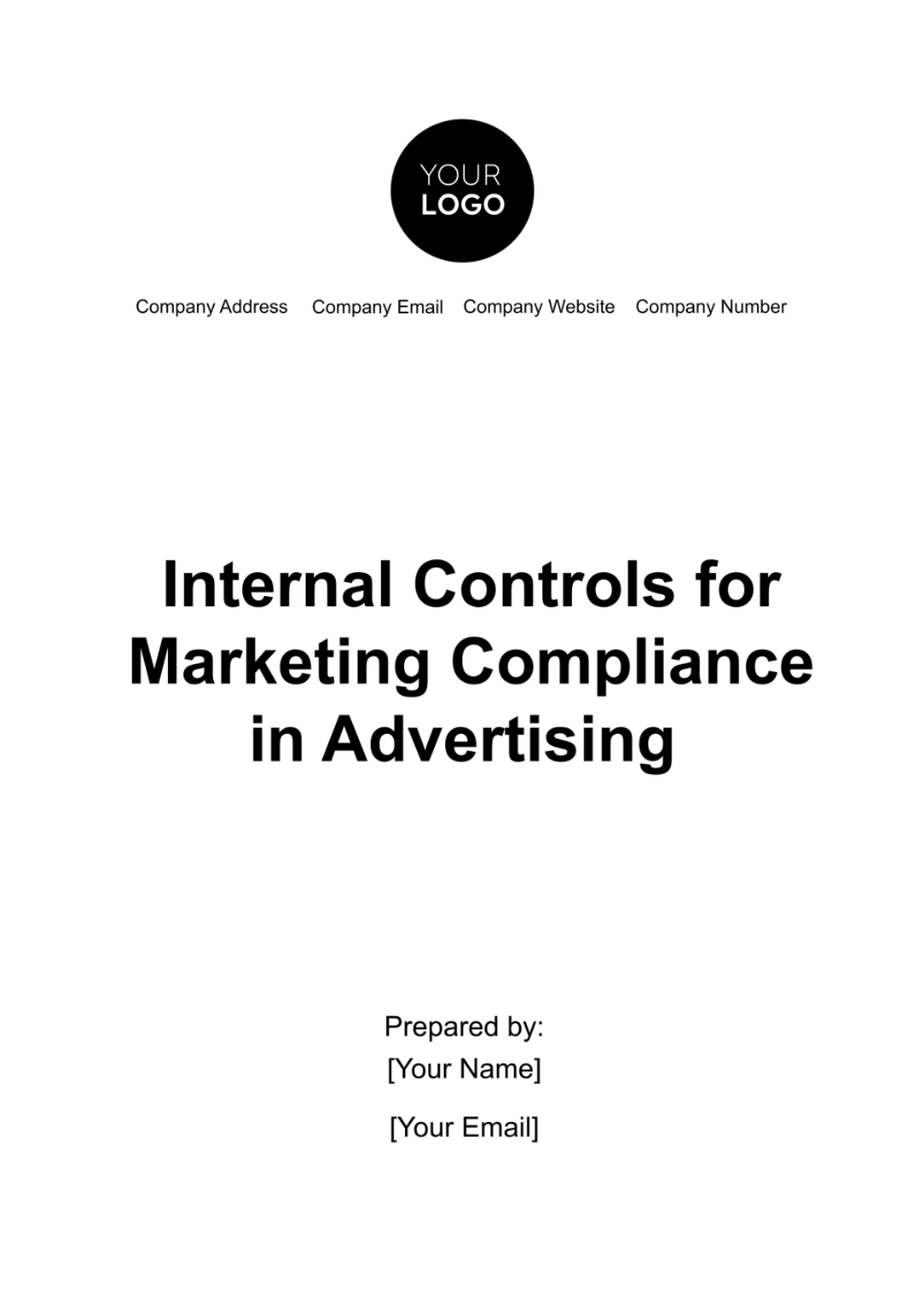
1. Introduction
[Your Company Name] recognizes the critical importance of compliance in advertising and marketing practices. This document outlines the internal controls established to ensure that all advertising activities adhere to relevant laws and regulations, maintain ethical standards, and protect our brand's reputation.
Scope of Internal Controls
These internal controls encompass a wide range of areas related to advertising compliance, including but not limited to regulatory compliance, record-keeping, intellectual property, endorsements, privacy, and more.
2. Advertising Regulations and Guidelines
Understanding and adhering to relevant regulations and guidelines is paramount. This section provides an overview of the key aspects:
Federal Regulations
The Federal Trade Commission (FTC) Act governs truth-in-advertising, ensuring that advertisements do not deceive or mislead consumers. The CAN-SPAM Act sets rules for commercial emails. It is crucial for [Your Company Name] to comply with these federal regulations to maintain consumer trust and avoid legal repercussions.
State and Local Regulations
State and local regulations play a pivotal role in advertising compliance. [Your Company Name] emphasizes the importance of understanding these regional regulations to ensure full compliance. It is imperative to review state-specific requirements and adjust advertising strategies accordingly.
Industry-Specific Regulations
Some industries, such as food and pharmaceuticals, are subject to industry-specific regulations. For instance, the FDA imposes stringent guidelines on advertising for food and pharmaceutical products. [Your Company Name] operates in a dynamic industry, and it is crucial to remain informed about any industry-specific regulations that may apply.
3. Documenting Advertising Campaigns
Effective documentation is the backbone of well-executed advertising campaigns. This chapter delves into key aspects of documentation:
Campaign Briefs
Creating campaign briefs is essential to communicate campaign objectives, target audience profiles, and key messages clearly. These briefs act as a roadmap, aligning all team members towards common goals. At [Your Company Name], we stress the importance of thorough and detailed campaign briefs to minimize misinterpretation and maximize the impact of our campaigns.
Creative Assets
Managing creative assets efficiently is integral to campaign success. This outlines procedures for handling creative assets, including image, video, and text files. It underscores the significance of version control to prevent errors and inconsistencies. Additionally, it emphasizes the necessity of securing rights and licenses for creative content to avoid legal complications.
Compliance Documentation
Documentation plays a critical role in ensuring compliance with advertising regulations. This outlines the rigorous requirements for maintaining meticulous compliance documentation for each advertising campaign. These documents include records of approvals, disclaimers, and substantiation materials, all of which serve as proof of adherence to legal and ethical standards.
4. Review and Approval Process
A robust review and approval process is the cornerstone of compliant advertising campaigns. This section provides insights into the crucial steps involved:
Pre-Campaign Review
This process is designed to ensure that all advertising materials, from concept to execution, align with both internal policies and legal requirements. It's a proactive measure to mitigate risks and maintain adherence to established standards. At [Your Company Name], the pre-campaign review process is meticulously conducted to verify that our advertising materials are ethically sound, legally compliant, and aligned with our brand values.
Legal Review
Legal scrutiny is an important process of an advertising campaign. This details the steps involved in obtaining a legal review and clearance for advertising materials. The legal review aims to identify and address potential legal issues that could arise during the campaign's execution. The legal department at [Your Company Name] diligently evaluates each campaign to ensure compliance with laws and regulations, providing the necessary legal guidance.
Final Approval
The final approval process marks the culmination of efforts, where stakeholders come together to greenlight the campaign for launch. This explains the roles and responsibilities of each stakeholder, from marketing teams to legal experts, in granting final approval. It also outlines the documentation required for campaign launch, including any compliance-related materials.
5. Record-Keeping and Documentation
Maintaining organized records and documents is the backbone of a compliant advertising operation. This chapter outlines the critical elements of record-keeping and documentation:
Document Retention Policy
A well-defined document retention policy is essential to guide [Your Company Name] in retaining and disposing of advertising-related documents in accordance with legal requirements. It ensures that essential records are preserved while unnecessary clutter is eliminated. By adhering to this policy, [Your Company Name] maintains a streamlined and compliant documentation process.
Compliance Audits
Periodic compliance audits are a proactive approach to maintaining advertising compliance. They serve as internal assessments to identify areas of improvement and ensure ongoing adherence to advertising regulations. [Your Company Name] recognizes the importance of these audits and encourages their regular implementation.
Incident Reporting
Timely and accurate reporting of legal incidents or violations is imperative to address issues promptly and minimize potential damage. This explains the process for reporting such incidents and emphasizes the need for clear, consistent, and swift reporting.
6. Advertising Claims and Substantiation
Truth-in-Advertising
Truth-in-advertising demands that all claims made in advertising materials be accurate and not misleading. [Your Company Name] recognizes the gravity of this principle and adheres to it rigorously. This elaborates on the concept of truth-in-advertising, emphasizing the consequences of false or misleading claims.
Substantiating Claims
Backing up product claims with solid evidence is not just good practice; it's a legal requirement. This discusses the necessity of providing evidence to support product claims and outlines the process for obtaining and maintaining substantiation materials. [Your Company Name] follows a meticulous approach to substantiating claims, ensuring that our advertising materials are grounded in factual information.
Comparative Advertising
Comparing your products or services to competitors can be an effective advertising strategy, but it must be done within established rules and limitations. This explains the rules governing comparative advertising, emphasizing the importance of fairness and accuracy. [Your Company Name] engages in comparative advertising with the utmost integrity, ensuring that our comparisons are truthful and beneficial to consumers.
7. Intellectual Property
Copyrights
Respecting copyrights is paramount when using images, videos, or music in advertisements. This underscores the importance of obtaining proper permissions and licenses for copyrighted materials. [Your Company Name] is committed to upholding intellectual property rights and ensuring legal compliance.
Trademarks
Understanding trademark usage and protection is essential to avoid infringing on others' trademarks. This discusses the guidelines for conducting trademark searches and emphasizes the need for due diligence in trademark usage. We prioritize trademark compliance to safeguard our brand and reputation.
Patents
Handling patented products or technologies in advertising requires thorough consideration. This highlights the importance of verifying patent status and obtaining necessary licenses. [Your Company Name] respects patent rights and diligently adheres to patent-related regulations.
8. Endorsements and Testimonials
Disclosure Requirements
Transparency details the requirements for disclosing material connections between endorsers and [Your Company Name]. It includes templates for clear and conspicuous disclosures, ensuring that consumers are aware of any affiliations. [Your Company Name] takes disclosure requirements seriously and provides comprehensive guidance to endorsers to ensure compliance.
Use of Influencers
Collaborating with influencers has become a significant aspect of modern advertising. This outlines the guidelines for working with influencers and leveraging their endorsements. It covers contractual and disclosure requirements, ensuring that influencer partnerships are transparent and compliant.
FTC Guidelines
The Federal Trade Commission (FTC) provides clear guidelines for endorsements and testimonials. This emphasizes their importance in maintaining advertising transparency and integrity. [Your Company Name] is fully committed to compliance with these guidelines, and we expect all stakeholders to adhere to them rigorously.
9. Privacy and Data Protection
Data Collection and Usage
The collection and use of customer data are fundamental to advertising strategies. This provides an insight into how [Your Company Name] collects and utilizes customer data while underscoring the importance of privacy policies. We understand the significance of transparency in data handling and, as such, maintain robust privacy policies to ensure compliance with data protection laws.
GDPR Compliance
For advertising to European customers, General Data Protection Regulation (GDPR) compliance is of paramount importance. This explains the intricacies of GDPR compliance, including obtaining explicit consent and the possibility of appointing a Data Protection Officer (DPO) if required.
CCPA Compliance
California residents are afforded unique data protection rights under the California Consumer Privacy Act (CCPA). This delves into the intricacies of CCPA compliance, including obligations related to data disclosure and opt-out mechanisms.
10. Social Media Advertising
Social Media Guidelines
Advertising on social media platforms requires a nuanced approach. This provides comprehensive guidelines for advertising on social media, encompassing best practices for content creation, engagement, and transparency.
User-Generated Content
User-generated content (UGC) can be a valuable resource, but it also poses potential legal issues. This explains how to handle UGC and underscores the importance of obtaining permissions from content creators. [Your Company Name] values the contributions of our audience and follows meticulous procedures to ensure compliance with copyright and privacy laws.
Sponsored Posts
Transparency is the cornerstone of sponsored social media posts. This discusses the need for clear disclosures in such posts to comply with regulatory requirements and maintain transparency with the audience. [Your Company Name] is dedicated to ethical advertising practices and adheres to disclosure guidelines for sponsored content.
11. Advertising Agreements
Client Agreements
Client agreements are the foundation of our advertising services. This provides a sample client agreement template, encompassing terms related to scope, fees, intellectual property, and confidentiality. [Your Company Name] values transparency and professionalism in client relationships and emphasizes the importance of well-defined agreements.
Vendor Agreements
Agreements with advertising vendors are vital to ensuring smooth collaborations. This offers a template for vendor agreements, outlining responsibilities, payment terms, and intellectual property rights. [Your Company Name] values vendor partnerships and strives for clarity in these agreements.
Media Buying Agreements
Media buying agreements with publishers or platforms are central to advertising campaigns. This section includes a template for media buying agreements, specifying advertising space, payment terms, and terms and conditions. [Your Company Name] prioritizes precision in media buying agreements to optimize campaign performance.
12. Record-Keeping and Documentation
Document Retention Policy
A solid document retention policy is the backbone of organized record-keeping. This emphasizes the importance of document retention and provides a policy template for retaining advertising-related documents in compliance with legal requirements. At [Your Company Name], we understand the significance of preserving records and ensuring their accessibility while maintaining compliance.
Compliance Audits
Periodic compliance audits are proactive measures to ensure ongoing adherence to advertising regulations. This discusses the need for these audits and offers guidance on how to conduct them effectively. [Your Company Name] is committed to maintaining a high level of compliance and encourages regular compliance audits.
Incident Reporting
Timely and accurate reporting of legal incidents or violations is imperative to address issues promptly. This explains the process for reporting such incidents and emphasizes the need for clear, consistent, and swift reporting. [Your Company Name] maintains a vigilant approach to incident reporting, ensuring that issues are addressed promptly and appropriately.
13. Conclusion
By adhering to these internal controls, we ensure that every advertising campaign is not only creative and impactful but also in alignment with the highest standards of integrity. As we move forward, we remain dedicated to upholding the principles outlined in this handbook. Our commitment to continuous learning, adaptation, and ethical advertising practices will continue to guide us in delivering compelling and compliant advertising campaigns.
Thank you for entrusting [Your Company Name] with your advertising needs, and we look forward to a future where we continue to push the boundaries of creativity while staying firmly rooted in compliance and ethics.
- 100% Customizable, free editor
- Access 1 Million+ Templates, photo’s & graphics
- Download or share as a template
- Click and replace photos, graphics, text, backgrounds
- Resize, crop, AI write & more
- Access advanced editor
Introducing the Internal Controls For Marketing Compliance In Advertising Template by Template.net. This document empowers companies to establish robust controls ensuring adherence to marketing regulations. Tailored by experts, it provides a framework for seamless integration into marketing practices, fostering compliance excellence. Elevate your marketing governance with this indispensable template.


